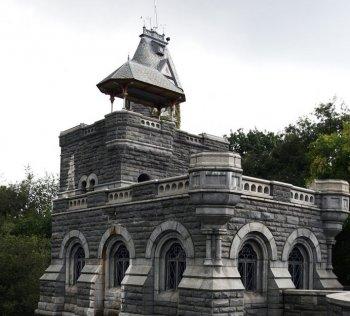The purpose of the project was to solicit ideas for future use and design of Coney Island. The goal of MAS’s “ImagineConey” initiative was to develop a new way of visioning and designing a 21st century amusement area that would capture the imagination of design professionals and the public.
The project featured an innovative global Web-based call for ideas, public workshops and a charrette (an intense design workshop) featuring a team of international architects, amusement designers and economists. “ImagineConey” generated more than 300 concepts from individuals, as well as specific recommendations from charette participants. Public ideas include creating a “Sushi Skatepark,” a Venice Beach-style “Muscle Beach”; a “Futurama” complex of amusements with the world’s largest retractable roof; rebuilding the historic Elephant Hotel and many more.
Prior to the beginning of “ImagineConey,” an economic study was conducted by real estate advisory company Robert Charles Lesser and Co (RCLCo) led by entertainment developer David Malmuth, who oversaw the renovation of the New Amsterdam Theater in New York City, and the Kodak Theater in Hollywood.
The study formed the basis of the MAS recommendations. The study projected a minimum of 3.5 million visitors to a well-executed amusement area at Coney Island, which would require a minimum of 25 acres of land set aside for amusements, rides and restaurants only. The study also identified: a) an opportunity for a major new ride at Coney Island, comparable in scope to the London Eye; b) opportunities for revenue-generating sponsorship and signage; c) a market for hotels and retail outside of the amusement area in Coney North and Coney West.
The study also projected that because of the high cost of land in Coney Island and the low residual economic returns from amusements, the city would need to purchase land to ensure the creation of an amusement area.
“The extraordinary array of ‘ImagineConey’ submissions from the public is a reminder of Coney Island’s unique potential as New York’s great waterfront destination,” said MAS president Vin Cipolla. “Building on the City’s work so far, we must take the steps necessary to realize that potential and create a truly original destination and economic engine for New Yorkers and tourists alike.”
“We’re absolutely convinced of the potential for a highly successful amusement area in Coney Island that could draw a minimum of 3.5 million visitors each year. However, a minimum of 25 acres set aside for amusements, restaurants and rides only is required to make it work,” said developer David Malmuth, of nationally known real estate firm RCLCo, which was commissioned by MAS to study the economic potential of Coney Island.
Noting the recent closure of Astroland, MAS also called on key stakeholders to engage the services of a production company to program additional activities in Coney Island in the upcoming seasons. “Coney Island is at risk of evaporating completely over the next few years,” said Cipolla. “It’s critical that additional entertainment activities are programmed to keep Coney Island alive and thriving while a longer-term vision is shaped and economic conditions improve.”
Building on the City’s recent actions to revitalize the area, MAS will also set forth the steps it believes are necessary to successfully return Coney Island to its former place as a dynamic and robust entertainment and amusement destination:
New York City Should Buy the Land for an Amusement Area.
At current land values, it is unrealistic to expect private developers to construct amusements in Coney Island. Building on its successful effort to purchase a parcel last November, New York City should purchase enough land for a Coney Island Amusement Area of sufficient scale that could then be managed by a private, third-party entity overseeing a mix of large, small and mid-scale operators.
Refine Vision for a Viable Coney Island.
Building on the strategic plan developed by the city, key stakeholders should develop a specific master plan for Coney Island that incorporates 25 acres of amusements, excluding retail and hotel uses, to support a minimum of 3.4 million visitors annually. The refined vision should include a signature, iconic ride that re-establishes Coney Island as world-class destination and enough rides to support up to 15,000 visitors at any one time.
Shape the Zoning to Complement Refined Vision.
New York City should ensure that its zoning for Coney Island North and West requires entertainment-related uses—including hotels and entertainment-related retail—that complement the activity in the amusement district.
Launch Interim Programming to Support Area in Short-Term.
Coney Island cannot be allowed to lie fallow in the upcoming years. Key stakeholders should engage a producer to develop short- and longer-term programming in Coney Island using existing and temporary spaces to ensure activity and attract visitors to Coney Island while long-term development efforts take shape.


Friends Read Free